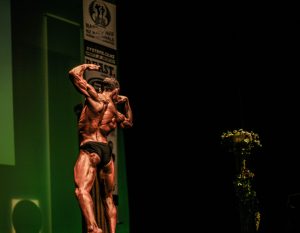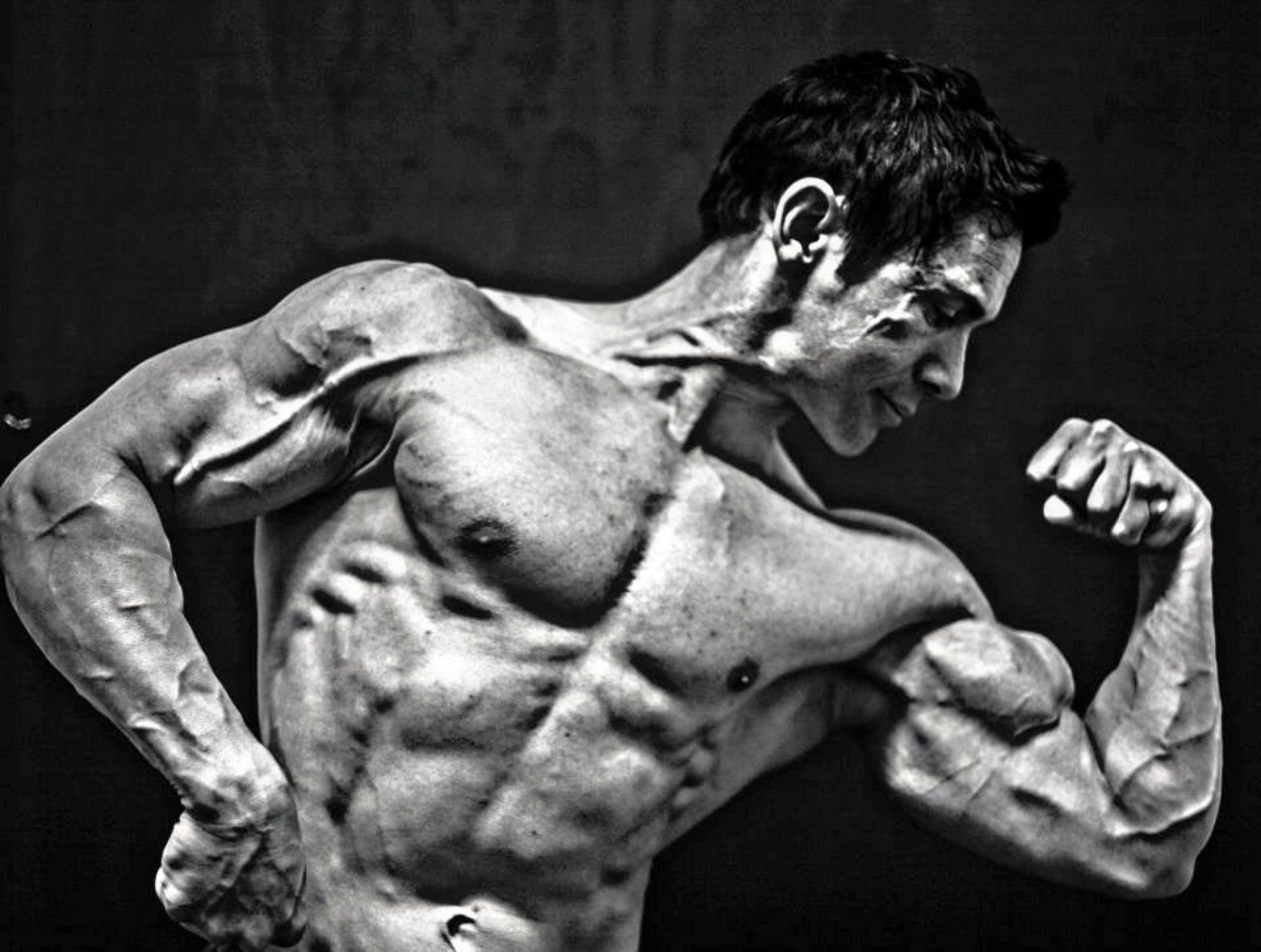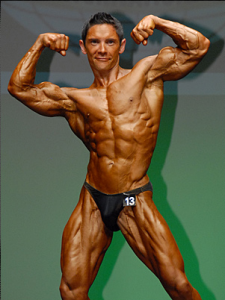
In recent articles I have talked about training less each workout so I could train more often to increase my gains in the gym. A month before the NABBA-WFF Nationals I decided to take this concept further and came up with the nine to five workout. “Nine to Five” means I only do nine sets in total for large body parts like upper legs, chest, back and shoulders and only 5 sets for smaller body parts like biceps, triceps, forearms and calves.
Why did I set these limits? I have always found that before a show I want to add in new exercises to make sure I cover all the bases- this can often mean my workouts are longer and I end up being in an over trained state. The other considerations were that smaller body parts like arms are always worked indirectly during all other upper body sessions and I wanted to focus on quality rather than quantity. I went back to using predominately rest pause training (Google DC training online for more information) where I set a rep goal for each exercise, choose a weight; and attempt to beat the rep goal over the designated number of sets with only 30 seconds rest between each set. I also went to a two day on one day off split.
Day 1 Quads & Calves
Day 2 Chest & Back
Day 3 Day off
Day 4 Hams & Calves
Day 5 Shoulders & arms
Day 6 Day off
Day 7 Repeat cycle
This split allows me to train legs twice over a six day period and my upper body muscles twice too, albeit through a direct and indirect hit (My Shoulders & Arms get hit indirectly on chest & back day and my Back and Chest are indirectly hit during my Shoulders and Arms workout.)
Here is a sample of my workouts leading up to the show this year.
Legs(Quad emphasis) & Calves & Forearms.
- Leg ext 120pd 17,8,6=31 rep goal=15
I then super-set front squats with squats.
- Front squats 100kg 8 5 5
- DXO Squats* 100kg 5 3 3
- Calf raises 310pd 13,10,7=30 + burns or x-rep sets for 2 sets.
- Cable f-arm curls 150pd 15,12,10,7,5 rep goal=50
Chest & Back
- Chin ups 20 kg 8,4,2=14 rep goal =15
- Incline DB Bench 5 kg 10,5,3=18 rep goal =15 Use 41.5 kg next w/out.
- Machine rows 210 pds 10,7,4=21 rep goal =15 Use 225 pds next w/out.
- Decline Bench 90 kg 9,5,3=17 rep goal =15 Use 92.5kg next w/out.
- Prone DB row 28kg 10,7,5=22 rep goal =15 Use 30kg next w/out.
- DB flat fly 28kg 10,6,3=19 rep goal =15 Use 30kg next w/out.
Legs(Hamstring emphasis) & Calves & Forearms
- Deadlifts 150 kg=8 Rep goal=10
- Standing leg curl 80pd 12,9,8=31 rep goal=29
- Leg press (Feet high on platform) 120 15, 160kg 15, 200kg 15, 240kg 15, 280kg 12
- Leg press calf press 210kg 12,10,7 + speed set =35
- Seated Calf raise(1-leg) 105pd=14 Rep goal=15
- Cable f-arm curls 150pd 20,15,10,7,5
Shoulders & Arms
- SS raise 28kg 15,11,7 Rep goal=30
- Shoulder press stack 8,4,2 Rep goal=15
- Leaning face pull 5kg 15,12,8 Rep goal=15 Use 18kg next w/out
- Concentration curl 22kg 10,7 Rep goal=15 Use 24kg next w/out
- Db curl 20kg 8 Rep goal=10
- Reverse curl 90pds 8,6 Rep goal=15
- Close grip bench 70kg 13,8 Rep goal=15 Use 75kg next w/out
- Tricep pushdown 75pd 12,6 Rep goal=15 Use 90pds next w/out
- DB pullover ext 35kg 8 Rep goal=10
My goal is to have a total workout time of no more than 30 minutes. To be honest the workouts have been challenging, growth and strength producing without fatiguing my central nervous system or hurting my joints and were perfect before the show. In fact I have found the workouts so effective I have continued with them after the show and will do so until the gains stop.
So if you have got a bit stale with your old training routine give my Nine to Five workout a try and you should honestly see some new strength and muscle gains ASAP!

